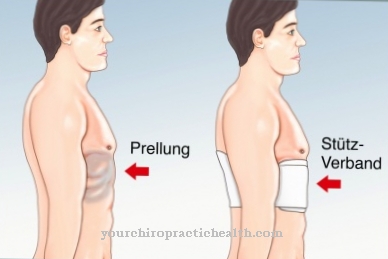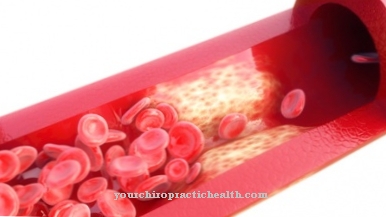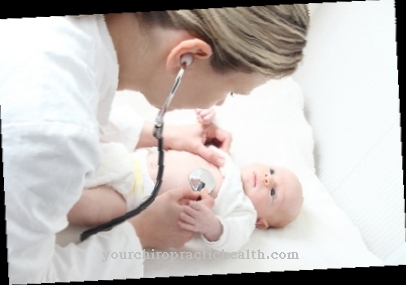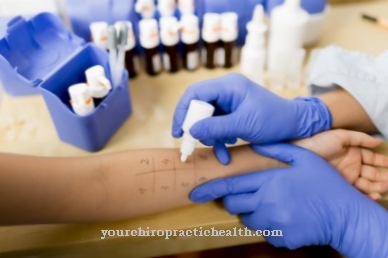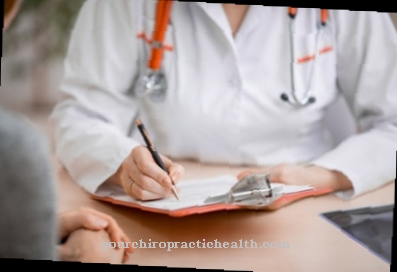More or less violent effects on the musculoskeletal system, which include muscles, tendons, fasciae and joints, represent sprains, contusions and strains. A sprain can only occur on joints. The ankle and wrist are preferred here. Bruises, on the other hand, affect the soft tissues, the muscles and the tendinous plates, the fasciae, which often lie above them. You only suffer strains in the muscles and their ends, which are known as tendons. Each of the mentioned injuries differs from the others by specific characteristics. The behavior and the treatment are therefore also different.
Causes of Sprains

What can you do yourself if you suffer an injury of this type?
A sprain is a violent impact known as a traumatic event. Here, a joint usually leaves its physiological position for a short time, i.e. temporarily, it shifts to another level and then goes back to its old position. By this force, e.g. When twisting the foot, injuries to the joint ligaments, joint capsules and muscle parts as well as their blood vessels are inevitable.
The result will often be an associated bruise. This can become visible spontaneously and within a few minutes or seconds, but it often only occurs after several hours or overnight.A sprain is different from one contortion in that in the latter the two joint parts remain permanently away from each other, i.e. are dislocated.
The dislocated shoulder is typical of a dislocation. The chronic sprains should also be mentioned. They occur even with minor incorrect loads and are caused by existing loosening and overstretching of the joint ligaments and the joint capsule. You then only hurt briefly at the moment of the incorrect exercise, and then react normally again after a few minutes without any signs of an actual sprain. This condition is most commonly seen in the ankle.
treatment
What should you do if you have an acute sprain? For first aid, you take an elastic bandage, known as an ideal bandage, 8 cm wide (never a gauze bandage) and put on a pressure-giving (compressing) bandage. This is used for cooling. A rule of thumb is to give preference to compression and cooling for all blunt injuries likely to result in a bruise.
The latter can be done by running cold water over the bandaged limbs or holding them in a bucket of cold water. Ice cubes can be added to the water to increase the cooling effect. An applied ice pack is ideal. You can improvise it by taking the ice cubes out of a refrigerator and pouring them onto a towel. The towel is tied at the top and the ice pack is ready to use.
A cold clay pack repeated every half hour is also very effective. Immediate treatment with a cooling spray or chloroethyl spray applied immediately after the injury is very useful, but does not exclude the immediately necessary compression and cooling in the manner described.
Instead of water or ice as a cooling element, alcohol, around 40 percent, is recommended, which is repeatedly poured onto the bandaged limbs. For this you can pour alcohol, rubbing alcohol, sports fluids, if necessary also a schnapps without sugar content such as old grain, juniper, Steinhäger etc. There is only one thing that you must not do when using alcohol, that is, surround the soaked bandage with waterproof fabric or plastic. The alcohol must be able to evaporate, only then does it develop coldness.
If he is unable to do this for the reasons mentioned, skin reactions occur, one speaks of alcohol burns. As well as alcohol works externally, the consumption of alcoholic beverages has a negative effect after an injury. Given internally, it dilates the blood vessels and can thereby increase the extent of a bruise.
The duration of the cooling, it is important, should not exceed 3-4 hours, because then almost all bleeding stops. If you continue to cool for hours or days, you unnecessarily delay the healing process. In severe cases, a doctor or the clinic is always to be visited and an X-ray is essential. After the cooling process, the joint should be bandaged dry, as well as in the following period. Normally, after 2-3 days, you can start with moist heat treatment, for which moist heat is available, as described under hot bath as a natural remedy.
Ointment dressings under the bandage are: In the first 3 days leech ointments or ointments containing heparin, but not immediately starting 24 hours after the injury. After approx. 4 days, a massage that begins slightly can be used to remove the bruise residues from the joint area as quickly as possible.
Movement therapy, as practicing, can then be started. As an iron rule, you should only do what is pain-free. It is often better to continuously load the affected joint. It is e.g. Better to practice 4 times a day for 10 minutes than 1 time 40 minutes right up to the pain threshold. Much at once doesn't help much. The recommended interval treatment does not allow any irritation to arise, as the parts of the body that are in the process of healing can always recover during the rest phases of a few hours.

